Tag: Championing ecological research
It’s really important to us that the expeditions we run assist and supplement the work that our field partners are doing.
Working with the local NGO, Madagasikara Voakajy, our team were able to help with monitoring and surveying the local wildlife such as the critically endangered golden mantella frog, the island’s vast variety of lemur species, small mammals, reptiles and amphibians.
Due to the mix of skills and expertise within the team, they also were able to provide training for the local community in first aid, run snake-handling workshops, and work with local school groups on raising awareness of the amazing wildlife in the forest.
For many of the staff, this trip was a once in a lifetime experience that took them completely out of their comfort zones. Take a look at the video below to find out what the staff thought of Madagascar…
It’s allowed us to learn new skills. So they can learn skills from us and we can take some skills from them.
The Mangabe Forest is also a great spot for bird watching, so the local communities are keen to develop the area for ecotourism. The Chester Zoo team were on hand to help plan routes which could be ideal for tours.
A very special thank you to travel clothing brand, Craghoppers, who supported this expedition. Craghoppers provided technical clothing for the expedition team and also sent a representative to join the expedition, providing a well-appreciated extra pair of hands!
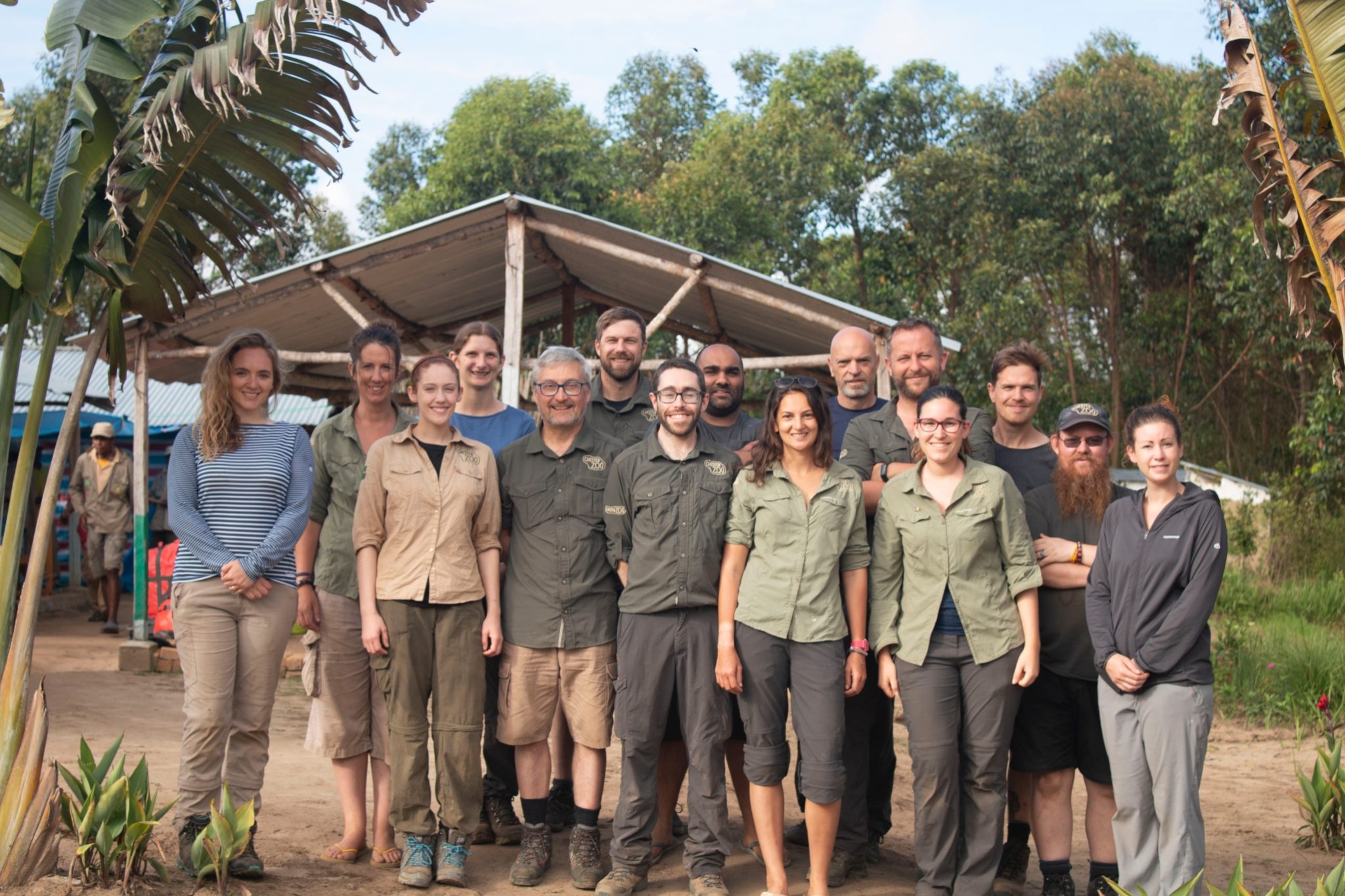
The lowland bongo was spotted on our camera traps in the rainforests of the Semuliki National Park in the southwest of the country where it borders the Democratic Republic of Congo.
For over 200 years, botanists have known about a strange tree growing at Castell Dinas Bran near Llangollen. The plant first described in Hudson’s Flora Anglica in 1798 was recorded to be growing out of the castle walls and looked a bit like a whitebeam. Botanists were confused about what it might be and gave it several different names!
A descendant of that tree was removed from the castle in the 1990s to prevent damage to the historic castle walls. The rescued tree was planted in a private garden and almost forgotten until 2016 when we became involved. We undertook a rescue project to remove the tree from the garden and brought it back to Chester Zoo where the idea for a conservation project grew.
Endemic to the limestone crags of the Eglywyseg escarpment in Denbighshire, the Llangollen whitebeam is an extremely rare tree which before our project was carried out had an estimated total population of 250 individuals. The last survey for the species had been done in the 1980s and our experts decided it was about time to conduct a resurvey to better understand the conservation status of this special tree and assess if any action was needed to ensure the survival of the rare species.
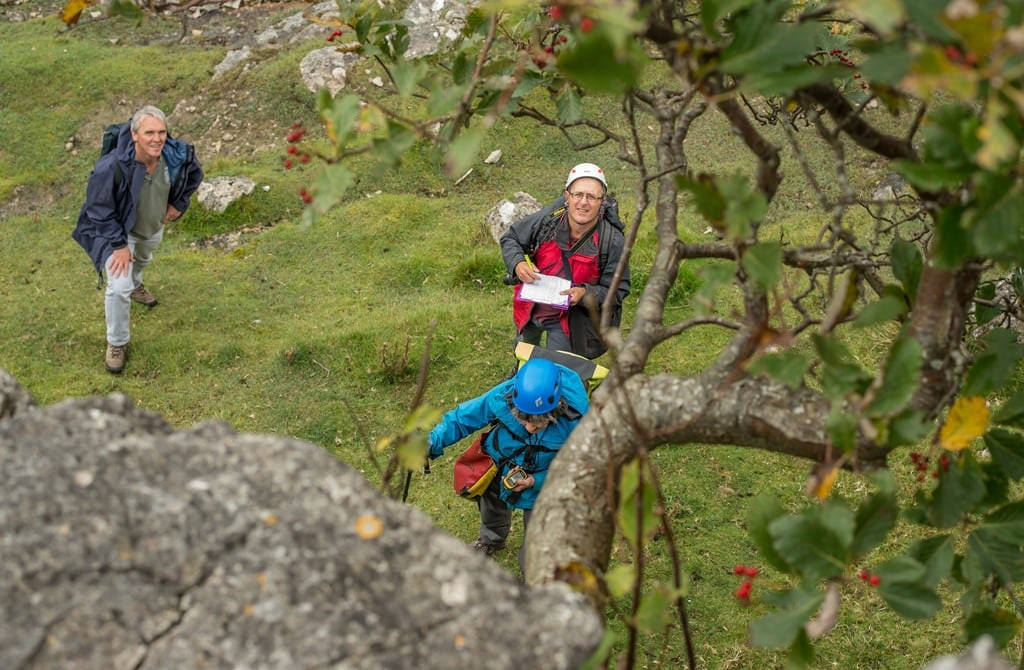
Sarah Bird, Biodiversity Officer – UK and Europe explains:
“Having a rare endemic tree growing so close to the zoo is really exciting. With only around 250 Llangollen whitebeam trees existing anywhere in the world, this is one of the rarest species Chester Zoo works with. Botanists Tim Rich and Libby Houston, who are whitebeam experts, came to record all the trees on the crags. The Llangollen whitebeam is very similar to some other British whitebeams so we had to get the best people to do the survey.”
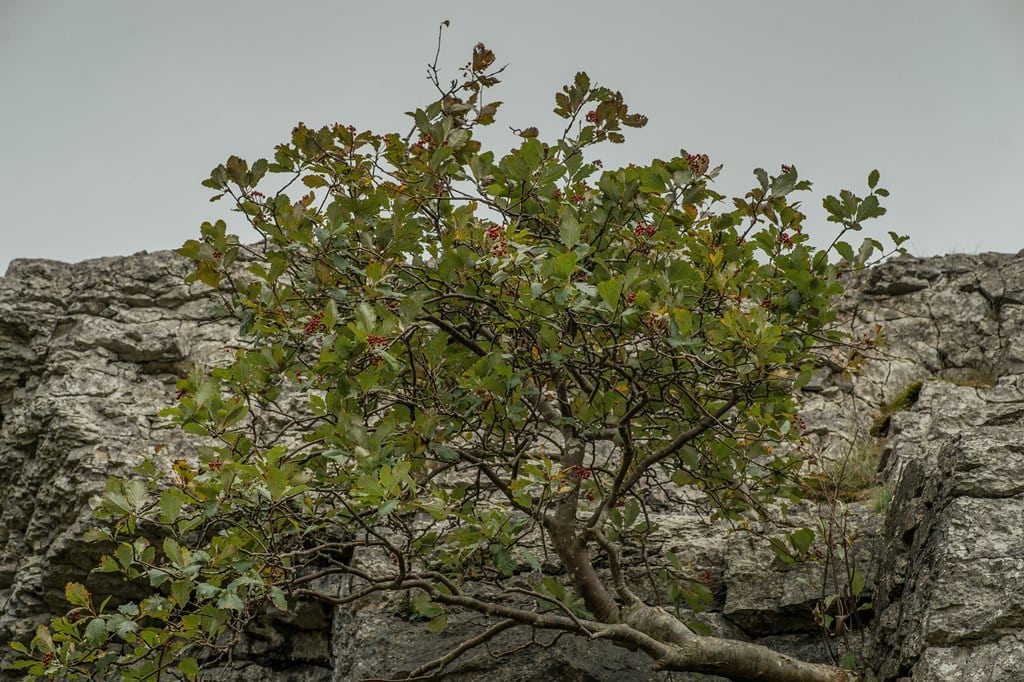
The full survey took place in 2017 and the team actually found 300 trees, showing that the population appears to be stable despite some threats from the invasive and non-native Cotoneaster species. Our work has resulted in an update of the species’ IUCN Red List status and measures have been taken to tackle the Cotoneaster.
In parallel with the field work, the Horticulture and Botany team at the zoo have been busy propagating Llangollen whitebeams. We have used seeds from the Millenium Seed bank at Kew and some collected from the crags, and we are thrilled to have 50 young trees in cultivation at the zoo!
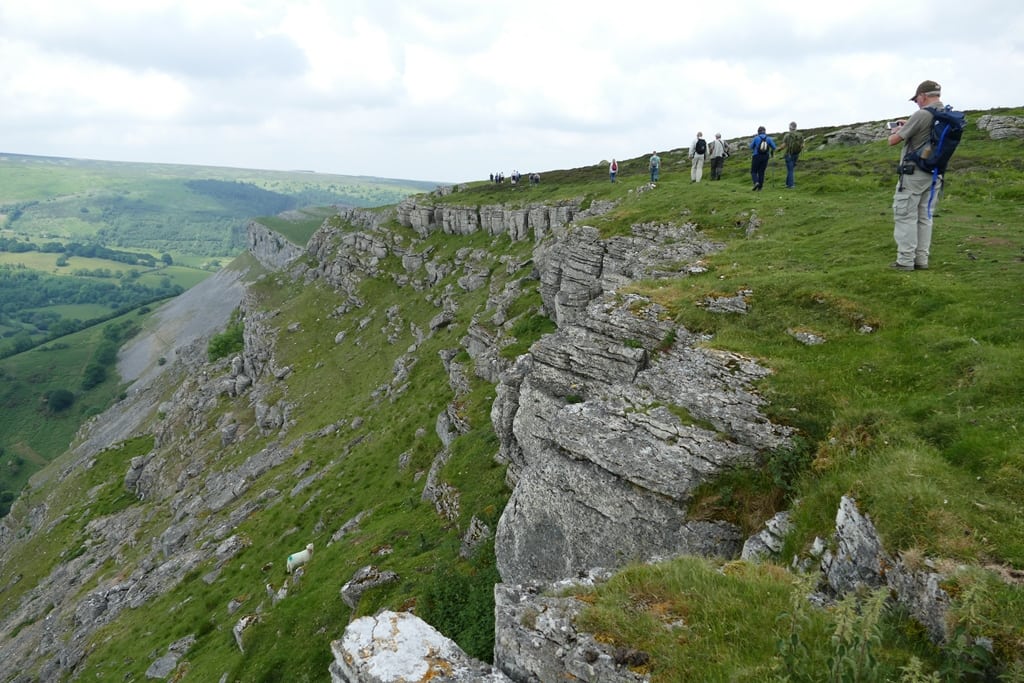
Richard Hewitt, Team Manager Nursery adds:
“It is great that the nursery team are using their expertise in propagation and growing on of locally threatened native trees here at Chester Zoo. Our aim is to grow on 100 trees of Llangollen whitebeam. When they are large enough, some will be planted near Castell Dinas Bran and the rest will go into public gardens in the region where we can tell people about this incredibly rare tree.”
The project is now focussing on raising awareness of this rare species in the local area. A few of the young trees will be returned to a safe spot near castle Dinas Bran. We will also be providing specimens for local public gardens accompanied with signs explaining the importance and curious history of the tree.
The limestone cliffs where this tree grows are really amazing. You can see them and meet botanist Tim Rich in the short film here.
On July 14 1960, Dr Jane Goodall stepped foot for the first time in what is now known as Gombe Stream National Park, Tanzania, to study wild chimpanzees. Her ground-breaking research put the spotlights on the species and their remarkable abilities, such as toolmaking.
However, our closest cousins are now facing serious threats and are listed as Endangered on the IUCN Red List of Threatened Species. With only 350,000 chimpanzees left in the wild compared to 1-2 million 100 years ago, protecting the species from habitat loss and the illegal wildlife trade is critical.
Stuart Nixon, Field Programmes Coordinator for Africa says:
“World Chimpanzee Day is something to celebrate! Humans have learned so much from studies of chimpanzees over the past 200 years: from increasing our understanding of our own evolutionary past to helping us advance manned space travel.
“Also, they possess astounding levels of intelligence, complex individual personalities, and rich and diverse regional cultures including tool use. Put simply, chimpanzees are absolutely amazing animals! I am proud and humbled to state that I am 99% chimpanzee.”
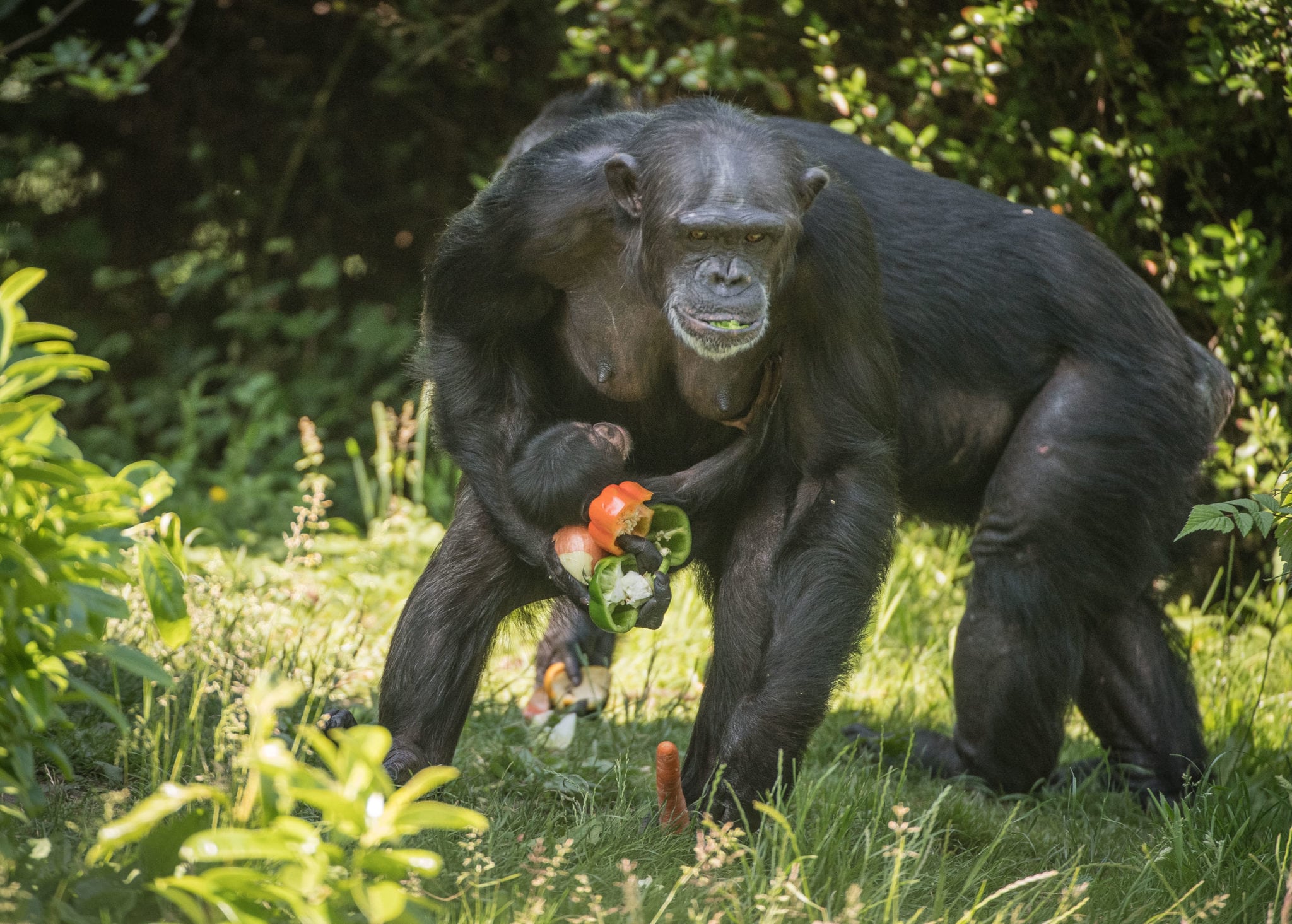
We are acting in four different countries to conserve chimpanzees and their habitat and are putting the spotlights on those projects today to celebrate World Chimpanzee Day.
Nigeria
Gashaka Gumti National Park (GGNP) is home to the endangered Elliot’s (or Nigeria-Cameroon) chimpanzee, the rarest of all chimpanzee subspecies. It’s believed to support one of the largest remaining populations, making it a high priority for the species’ survival. We have been supporting the protection of Gashaka Gumti National Park since 1994 carrying out the first surveys of the chimpanzee and working with the Nigerian Park Service and local communities. Since 2016 we’ve been leading vital conservation research in Gashaka. Since 2016, the team has carried out approximately 650km of exploratory surveys including monthly monitoring of chimpanzee populations and camera trapping in the rugged southern sector of the park.
We have also provided support to the Nigerian Montane Forest Project (NMFP) for over a decade. Based in Ngel Nyaki Forest reserve in the south-east of Nigeria, the NMFP team has conducted various research projects on an isolated population of Elliot’s chimpanzee, increasing knowledge of their ecology and nesting behaviour.
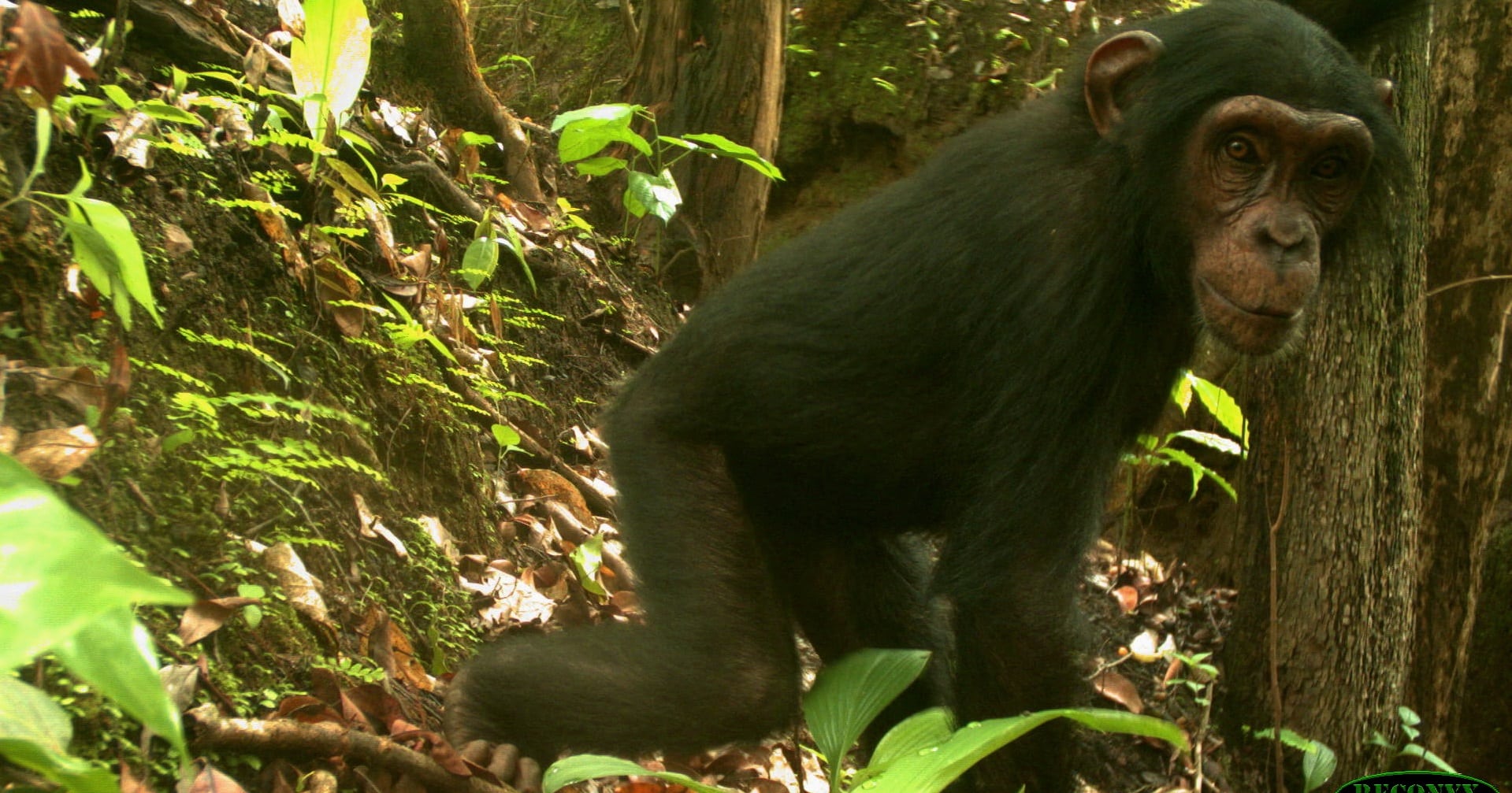
Gabon
We are now involved in an exciting brand new project in the Loango coastal forest region of south western Gabon, an area often referred to as Africa’s last Eden. In addition to being one of the last remaining strongholds of the western lowland gorilla, the region is also known to host populations of the central chimpanzee subspecies.
We are working in partnership with the Fernan-Vaz Gorilla Project to establish baseline data on the occurrence, distribution and density of chimpanzees and gorillas, as well as other threatened species, in a large, intact rainforest block north of the Loango National Park. The data collected will ultimately provide crucial information that could lead to the development of innovative conservation actions.
Democratic Republic of Congo
The eastern Democratic Republic of Congo is believed to support one the largest populations of chimpanzees remaining anywhere in Africa. It is thought to support up to 75,000 eastern chimpanzees in some of the continent’s most remote rainforests. The majority of surviving chimpanzees in DRC occurs outside of formerly protected areas where they are heavily threatened by bushmeat hunting and habitat loss.
Our efforts are focussed on supporting community-based monitoring and mapping of priority populations of chimpanzees, gorillas and okapi in this vast landscape. Chester Zoo experts have played a key role in developing IUCN action plans and innovative survey methods for great apes in this region.
Uganda
In Uganda, we recently completed the camera trap based surveys of the Semuliki National Park capturing images of the parks eastern chimpanzee population and assessing its distribution, numbers and threats to its survival.
In addition, since 2010 we’ve been supporting the New Nature Foundation (NNF) outside of the Kibale National Park, on their mission to conserve wild animals and their habitats through education and empowerment of local communities. To reduce the local reliance on forest woods, NNF has developed efficient stoves and biomass briquettes and distributed these widely in the surrounding communities protecting almost 2000 tonnes of rainforest trees from being cut down each year!
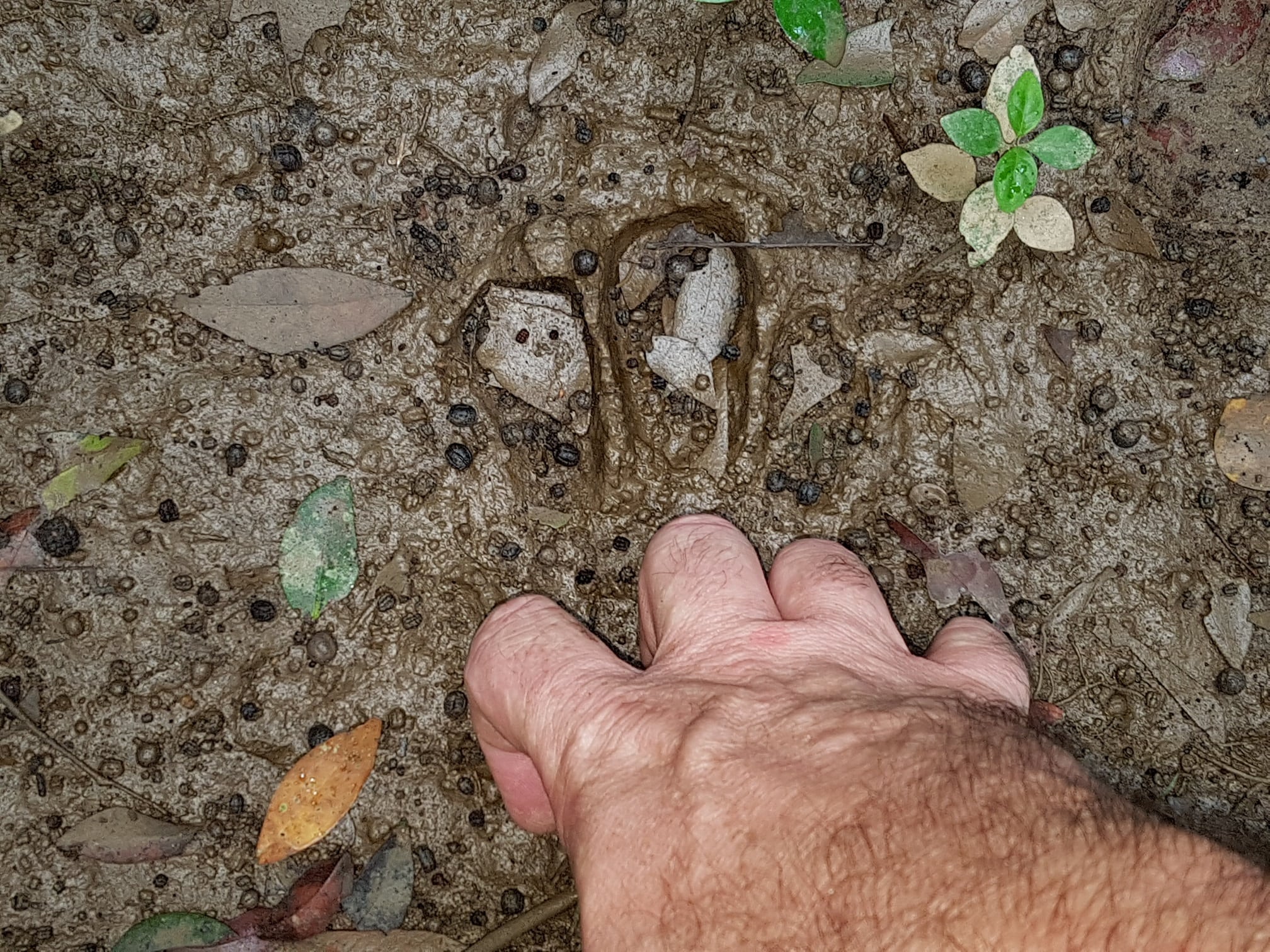
Working together with a team from the international zoo community, Sarah Roffe, Chester Zoo’s Giraffe Team Manager, and Hannah Taylor, Individual Giving Specialist, joined the Giraffe Conservation Foundation (GCF) and the Uganda Wildlife Authority (UWA) to help further our understanding of Nubian giraffe to inform conservation strategy.
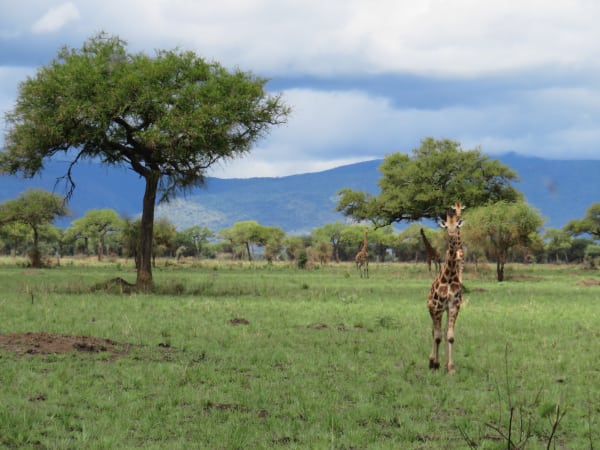
Nubian giraffes are amongst the most threatened of giraffe subspecies, with less than 2,000 individuals estimated to remain in Uganda. We’ve been providing financial and technical support to the annual survey of Nubian giraffe carried out by GCF and UWA in Kidepo since 2015.
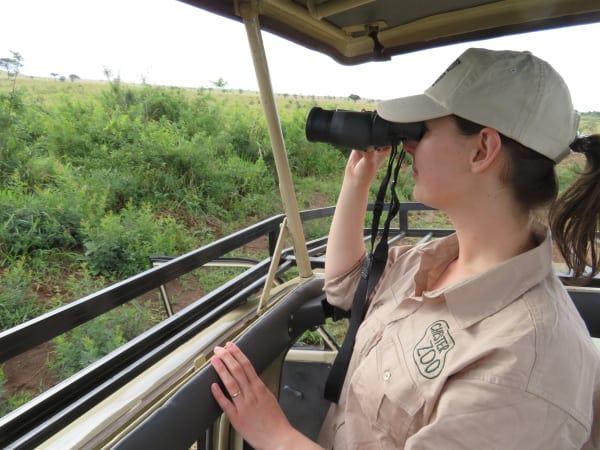
The team completed a three-day survey as part of an annual population census and spent two days fitting five individual giraffes with GPS collars. The challenges were immediately apparent to Hannah who says:
“It was incredibly exciting to head out on the search for the giraffe, but these large animals aren’t as easy to spot as you may think! I really appreciated the skills of Dr Julian Fennessy from GCF. He showed us how to pick out the shapes of the giraffe from amongst the trees in the distance.
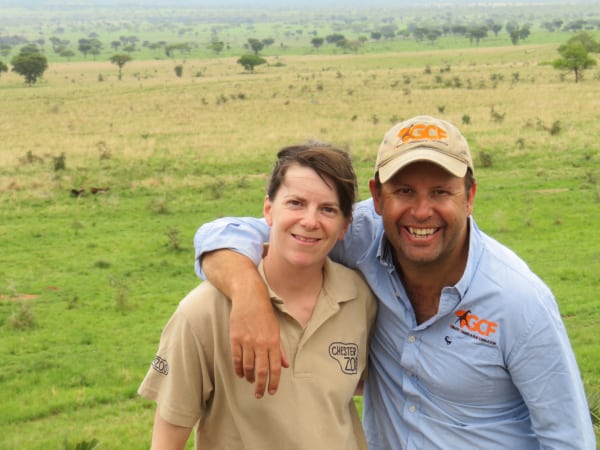
“We worked together to look out for the animals, take photos to add to the database, check the individual markings against the identification book and record the sighting. A highlight was spotting ‘Chester’ the giraffe and I felt really proud that we are partnering GCF and UWA and their amazing teams”
There were once more than 400 Nubian giraffe in Kidepo, but during the brutal dictatorship of the 1970s, the population crashed to just three individuals. Thanks to the dedicated protection efforts of UWA, that number has climbed to 36 individuals. However, the species remains vulnerable to extinction due to the loss and degradation of their preferred habitat, as well as disease and illegal hunting.
To help gain in-depth knowledge of their movements and habitat use, Hannah was part of the biggest exercise of its kind to fit giraffe with new solar-powered, lightweight GPS trackers. The tagging was led by the UWA vets and the trackers were fitted to the giraffe’s ossicones, while the data team and vets took measurements, genetics and blood samples, and conducted health checks.
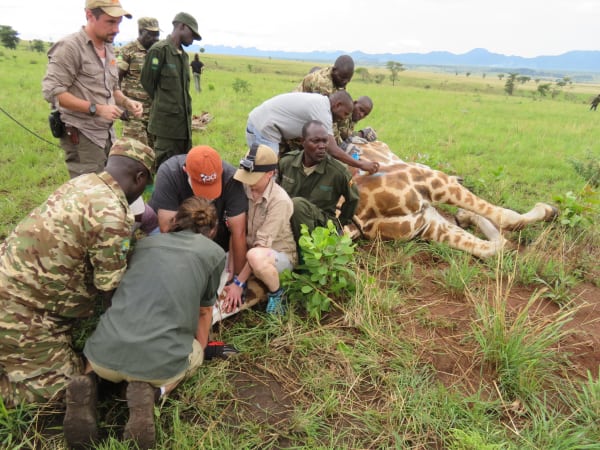
Stuart Nixon, Chester Zoo’s Field Programmes Coordinator for Africa adds:
“It is finally being recognised around the world just how threatened all wild giraffe populations are – something which has been overlooked for many years!
This is the fourth annual survey that we have supported and assisted with in Kidepo National Park, and it’s amazing to see the numbers of giraffe steadily growing with each survey. It shows clearly what can be achieved with dedicated effort but there is still a lot more to do before this population can be considered safe, especially while the population remains so small.
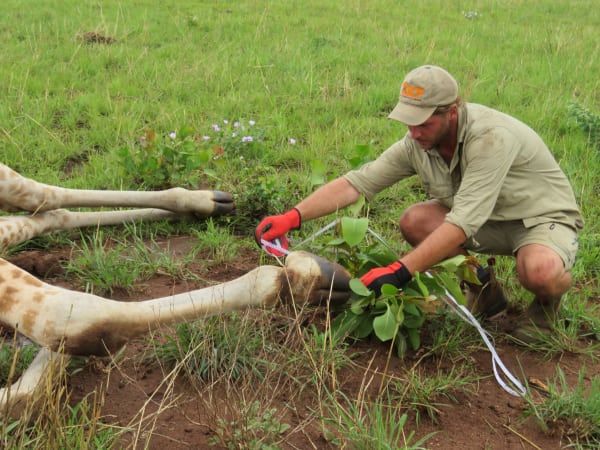
Over the next few years we plan to continue to work with GCF and UWA in Kidepo helping them put in place important actions from Uganda’s first national Conservation Strategy for Giraffe which we helped to develop in 2017. It’s only by working together and sticking at it that we can ensure the survival of this incredible species for future generations”
If you’re visiting the zoo on World Giraffe Day, then look out for our GCF giraffe print coffees, available in our food outlets!

Working with the Nigeria National Park Service (NNPS) and local communities, we’ve been leading vital research in Gashaka, which has revealed the continued presence of incredibly rare and endangered mammals.
The research has highlighted the extraordinary diversity of species found within the forests, including chimpanzees, leopards, the elusive golden cat and the first discovery of giant pangolins in Nigeria.
Chester Zoo conservationists, together with our project partners, have surveyed over 1000 square kilometres of the under-explored forests using camera traps and reconnaissance surveys. The camera trap photos revealed the presence of over 30 mammals – ranging in size from mice to buffalos – all found within the borders of the National Park. Some of the animals included three species of duiker, honey badgers, bushbuck, forest buffalo, red river hogs, giant forest hogs, mongoose, potto (a small nocturnal primate), a variety of monkeys and West African crocodiles. The list goes on!
Since 2016, the team has carried out approximately 500km of reconnaissance walks of the extremely rugged southern sector of the park and using camera traps they have captured over 50,000 images of the park’s wildlife. Some of the species caught on camera had never been recorded in the national park or in Nigeria before.
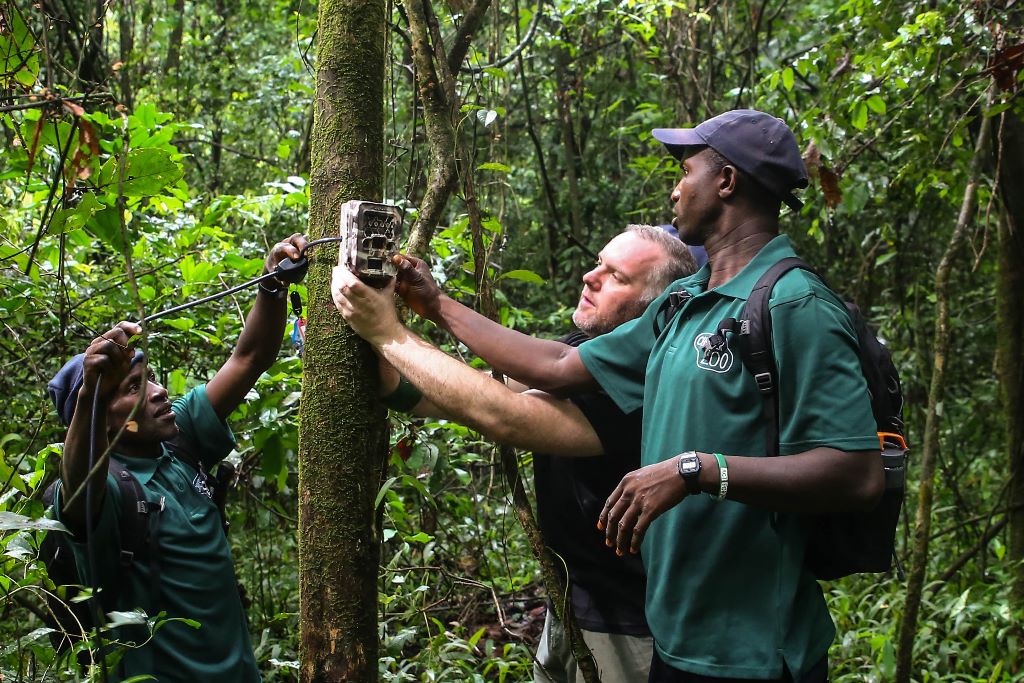
Research leader and Chester Zoo’s Africa Field Programme Coordinator, Stuart Nixon, tells us more about the discoveries:
“Gashaka Gumti National Park (GGNP) is staggeringly beautiful with an amazing diversity of habitats including mountain rainforests, savannah woodlands and rolling grasslands, but incredibly in 2018 it still remains little explored. The ongoing work we are carrying out is key to helping us develop a better understanding of the park, its wildlife and how to help conserve it. It’s an extremely exciting work to be involved with.”
GGNP is home to the endangered Nigeria-Cameroon chimpanzee, the rarest of all chimpanzee subspecies. It’s believed to support one of the largest remaining populations, making it a high priority for the species’ survival, but there have been no population surveys for 20 years. The research team is now planning to expand on current work, to carry out the first intensive survey of chimpanzees and the threats to their survival.
Stuart added:
“All of Africa’s remaining great ape populations are in serious danger of extinction from hunting, habitat loss, disease and the negative effects of climate change. GGNP is a priority site for chimpanzees, not just in Nigeria but for the entire continent so we need to know more about how many still survive in the park, what threatens their survival and find the key areas where we need to focus our conservation efforts.”
The surveys have revealed the first confirmed record of giant pangolins in Nigeria, the largest, least known and rarest of all the African pangolins. Pangolins are a group of scaled mammals, sometimes known as ‘scaly anteaters’. Sadly, they’re widely trafficked for their meat which is considered a delicacy in some countries and their scales which are often used for ethno-medicinal and cultural purposes. The team is now conducting additional research to discover more about this elusive species and protect it from poachers.
Another exciting discovery was capturing the first photographic evidence of leopards in the park, which are notoriously secretive! Their numbers are known to have drastically declined across Nigeria as a result of hunting and habitat loss and it’s possible that Gashaka supports one of the most significant leopard populations remaining in West Africa.
The research has also captured many images of the African golden cat in the park, Africa’s most elusive cat species. Data on this rainforest species is limited, so the results of this research are adding to existing global knowledge.
As part of ongoing training, a Chester Zoo led exploration team, ventured deep into the forests of GGNP in December, across the slopes of West Africa’s highest mountain – Gangirwal. The team spent ten days documenting wildlife and identifying the threats to its survival. The trip confirmed that the park still supports a high biodiversity but worryingly showed that threats from humans, including poaching and cattle herding, are occurring deep into remote areas of the forest.
Yohanna Saidu of the Nigerian Park service and Chief Warden of Gashaka Gumti National Park said:
“GGNP is an incredible part of Nigeria’s natural heritage and there are few places in Africa that can rival its spectacular beauty, but it survives barely known by the international community and under increasing threat. This work is helping us learn more about the secrets of one of our last wilderness areas and we must continue to work together to ensure its survival for future generations. If all this beauty were lost it would be a terrible tragedy for all.”
The biodiversity of the Nigerian mountains is less well known than that of any other African montane region. The Nigerian Montane Forest Project is the main body carrying out research on Nigerian montane forest diversity, ecology and restoration. The project has goals to promote national and international commitment to the conservation of Nigeria’s montane forests by both inspiring excellence in research and by empowering local communities through employment and education.
Hazel Chapman, Director of the Nigerian Montane Forest Project and Associate Professor at the University of Canterbury, gives us an update on the research we’ve supported on Nigerian montane forest diversity, ecology and restoration for over a decade. Hazel explains:
I consider the input to research and leadership around management of the field station by the local community as the major strength of the project. It is the enthusiasm and commitment of the staff that makes the project work.
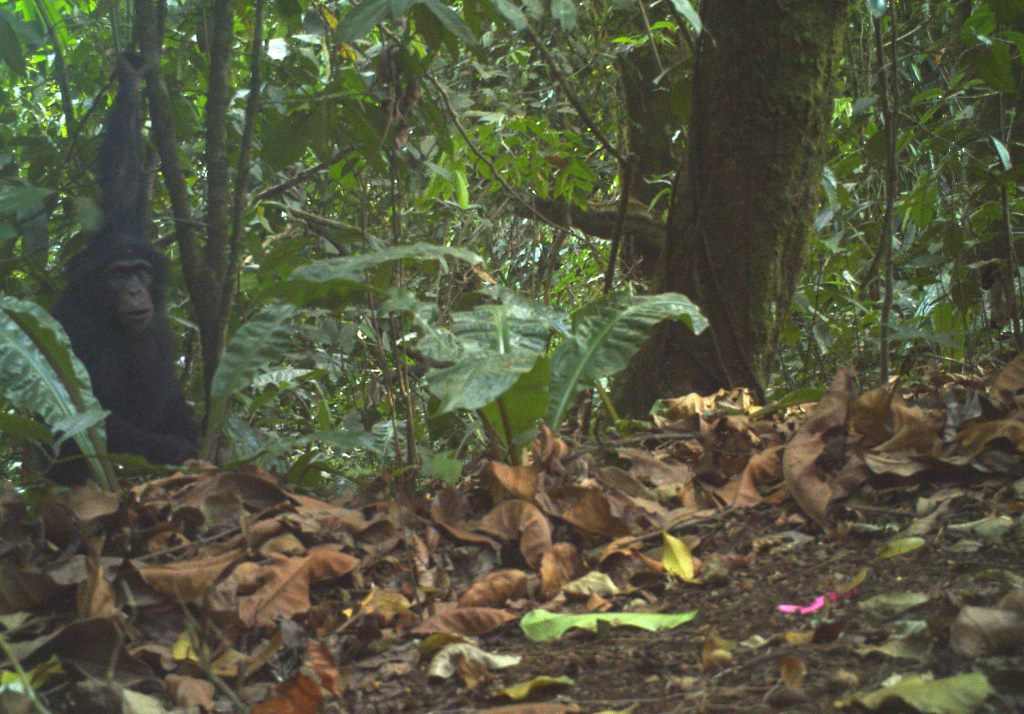
Research is a crucial part of the Nigerian Montane Forest Project and during 2017 five University of Canterbury students worked within the project and four PhD students had field based projects at Ngel Nyaki. Their research projects ranged from investigating the role of ground dwelling ants in seed dispersal to studying the ecology of the African pouched rat.
A strong focus of the project is to understand the Nigerian montane forest diversity and restoration and in 2017 post-graduate students looked at the value of forest fragments to maintain avian functional diversity, they also assessed the role of clumping in shaping species distribution and analysed the genetic diversity and connectivity on the Mambilla Plateau.
In addition of carrying out vital research, the Nigerian Montane Forest Project is working towards reforesting the area by planting thousands of seeds and seedlings into the forest edge habitat. In 2017, the team started a long-term investigation to understand how different factors such as light burn or grass grubbing can influence the speed of forest regeneration.
So far over 2,000 tree seedlings from the nursery have been planted and the team has records of which have survived, which are the most useful species for grassland and what are the best ways to ensure rapid germination of the seeds.
Hazel continues:
“While the Mambilla Plateau may never have been covered in trees, historically forest fragments were connected via riparian forest strips. A key aim of the Project is to first restore forest within the 46Km2 of Ngel Nyaki forest and then to promote more connectivity across the Plateau.”
Some exciting developments last year also included the building of a science outreach centre and the establishment of an arboretum in the campus ground. This brand new science centre, funded by New Zealand Ministry of Foreign Affairs and Trade, is a tremendous improvement to the learning and research environment for the students and established researchers. The building is also used by the young members of the Conservation Club who can watch conservation films or attend talks about the significance of the forest, the ecosystem services it provides and how forest helps to mitigate climate change!
The below video, from the Nigerian Montane Forest Project, provides an overview of the project and an insight into the work happening in this region:
We rely on many UK species for our food and even the air we breathe. From the tiny bugs to the bigger mammals; they all contribute towards a healthy environment that is vital for our survival. It’s like a jigsaw; if one piece is missing it just won’t work properly.
But how do we know if we’re losing a certain animal or plant? This is why it’s so important to record what wildlife we see throughout the year! The information collected helps conservationists to spot any changes or decline in species and to take action before it’s too late.
Knowledge is a vital tool for conservationists; the more information we have about our local habitats and the species that live within them the more we can do to protect them; especially those living within a built up area. If we don’t know what we’ve got, how do we know what’s missing or needs help?
We’ve been recording animals and plants on the Nature Reserve since the very beginning, even before the reserve was there! Recording wildlife is really important so that we can see what has changed and which species we’re helping.
Below are some of the ways we monitor the wildlife on the Nature Reserve…
Camera traps
We often place camera traps around the reserve to see what wonderful wildlife has been visiting! Here are a couple of our favourites:
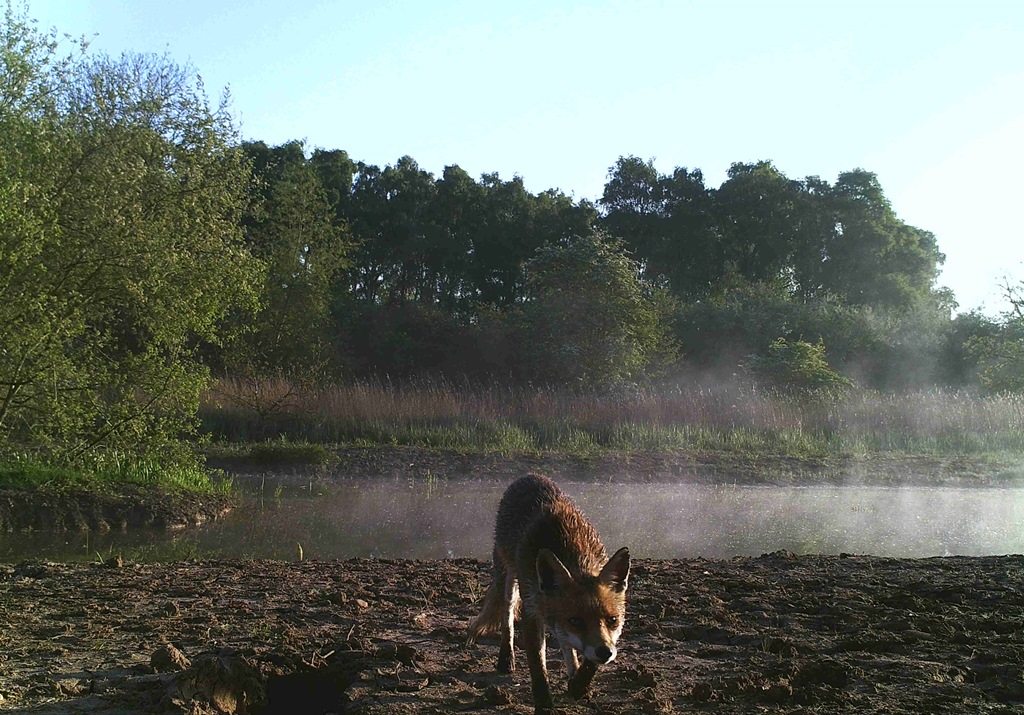
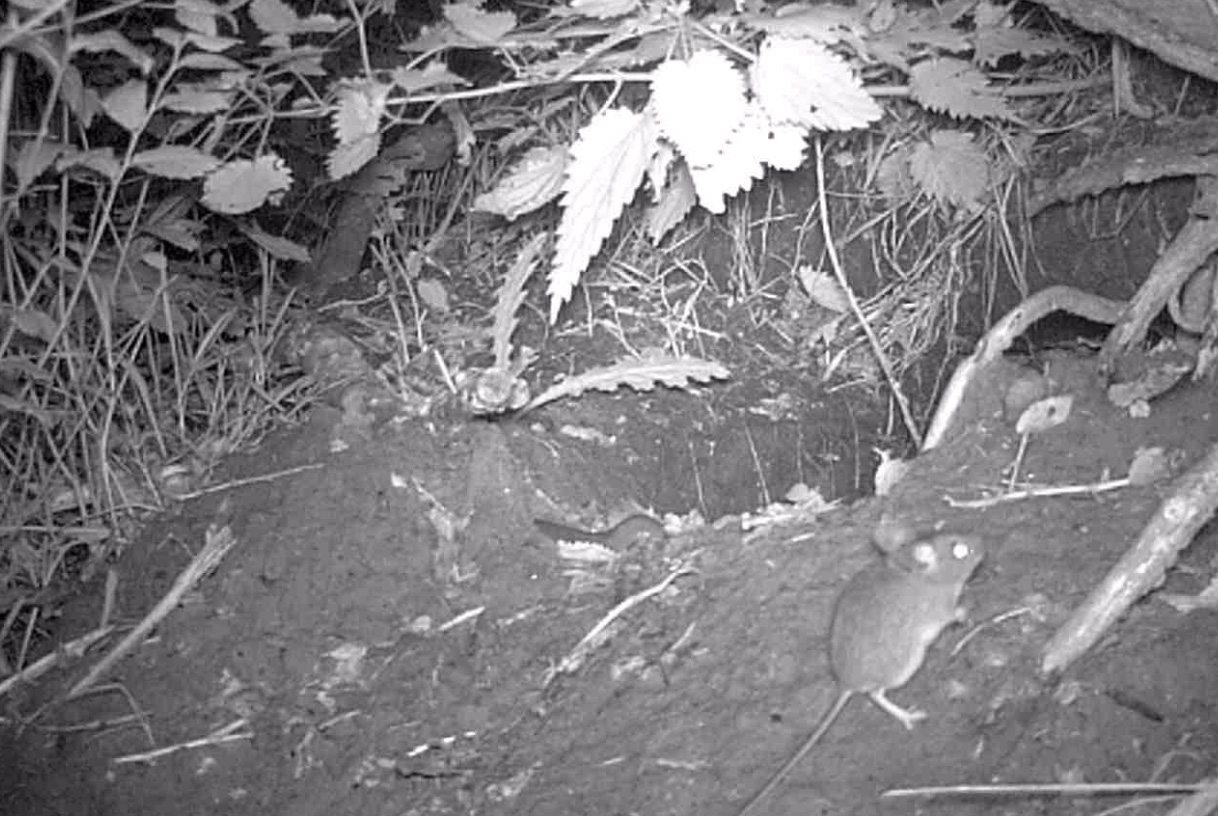
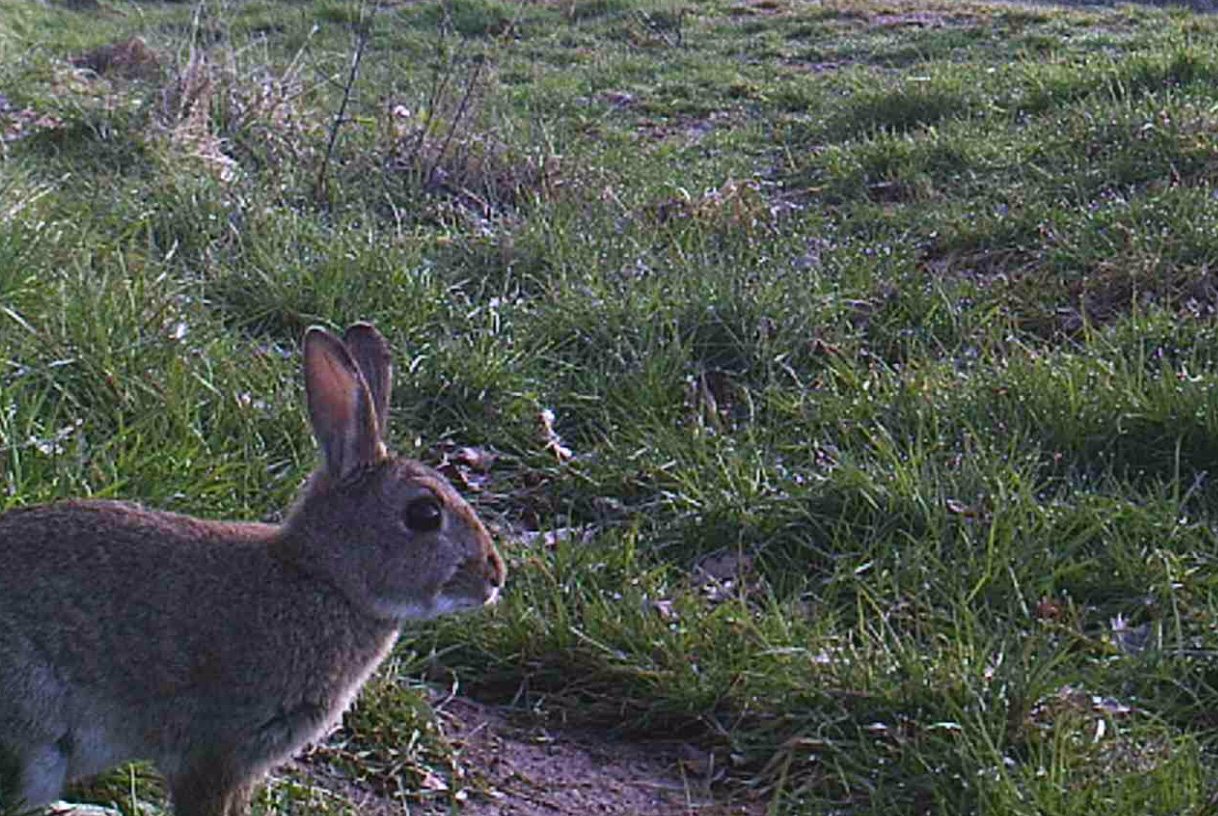
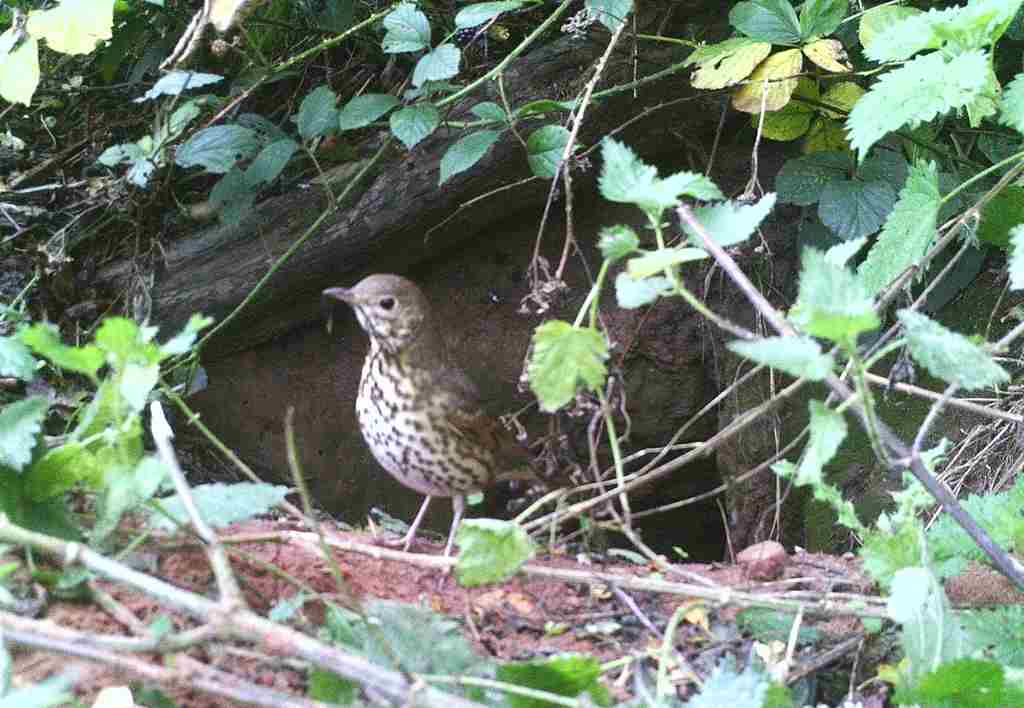
Small mammal survey
We’ve been surveying the range of small mammal species in different habitats throughout the Nature Reserve to help inform future management so that they can thrive there. Along with widespread species such as wood mouse and bank vole, we’ve also found a resident population of the secretive water shrew, who rely on good quality habitat.
We survey small mammals using our own Longworth traps and use grain and casters to encourage the animals into the snug nest box which is lined with hay. There’s always plenty of food to last the animals a couple of hours, until we check the trap. When we come to see what’s in the traps, we carefully place the animals in a clear bag, and gently work out the species, age and sex.
At the reserve we’ve left wide rough-grass margins on the mounds and along the edges of the meadow so that a variety of small mammals can make burrows and find plenty of food.
Other management is taking place in the Nature Reserve’s wet meadow to ensure that there are enough long stems for harvest mice to make their nests and plenty of overhanging growing vegetation in the ditches for water shrews. By repeating surveys over time we can build up a picture of how the management is helping small mammal populations in the long term. These animals are important in their own right, but they will also support larger mammals such as foxes and weasels, birds of prey including kestrel and buzzards and of course our local barn owls.
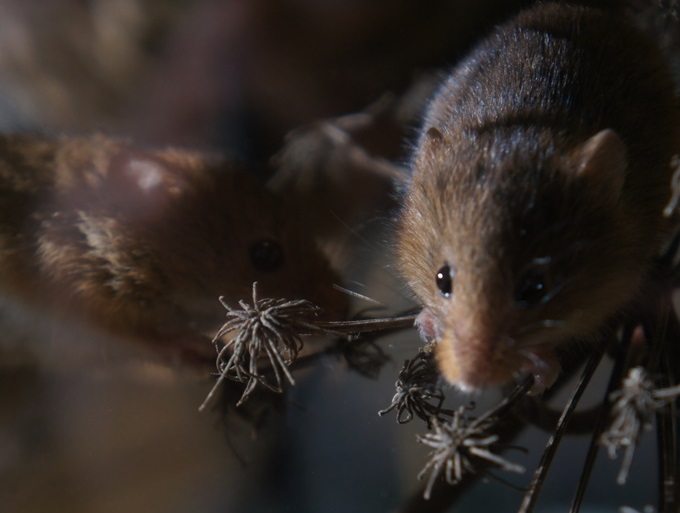
Butterfly Surveys
Based on the Butterfly Monitoring Scheme (BMS) methodology of surveying butterflies – we’ve recently set up a butterfly transect in the Nature Reserve. The route meanders past the woodland, down through the new meadow and into the wet meadow.
In 2017, we recorded 16 butterfly species with over 50 butterflies recorded on each visit! We know that the wet meadow is particularly good for orange tip and green veined whites that are attracted to the cuckoo flowers in spring, and then later in the season, the numerous thistles.
With further survey efforts we think that we should beat this species total in 2018 and it’s hoped that, as the meadow develops, we will attract even more species and higher numbers in future. By walking the same route each year, using a standard survey technique we’ll gradually get a long term picture of how butterflies are doing locally. There can be big fluctuations from year to year due to weather conditions and other environmental factors, but a general increasing trend over ten years provides good evidence that the reserve is having a positive impact.
Photo credit: Leanna Dixon
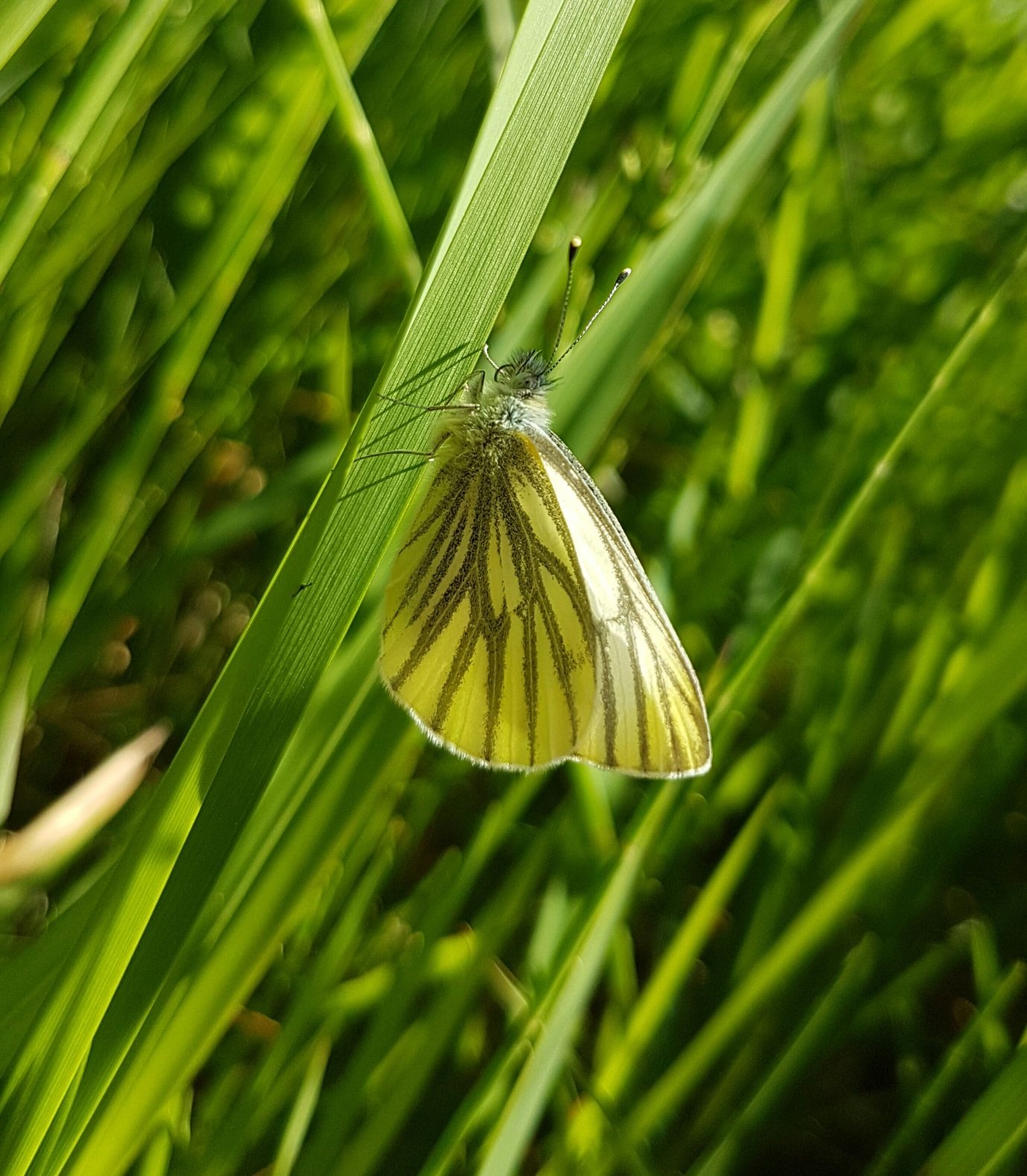
We will continue to maximise the amount of food for caterpillars and to provide nectar year-round for adult butterflies. There have previously been records of white-letter hairstreak in the area, making sure we maintain the young English elm trees in the hedgerows as they are essential for the caterpillar’s survival. We’re also beginning to monitor the moth species at the site by carrying out regular trapping sessions at night with our light-trap.
Watch this space for more updates of any exciting species spots!
Wildflower Monitoring
It’s not only important to monitor the mammals and insects that visit the Nature Reserve – it’s also important to monitor the floral diversity and structure of plants across the site. We use 4m2 quadrats that are placed at regular intervals along a set route. A quadrat is simply a square frame that is placed either randomly, or along a transect (line across the site) and then all of the plants that fall inside the frame are recorded. We’ve followed a ‘W’ shaped transect across the meadow with set ‘stops’ along the route.
At each stop the quadrat frame is placed randomly – not scientific normally by closing your eyes and throwing it a short distance – and the plants are then recorded. Our quadrat is separated into 9 sections and in each section we record the presence of all species of wildflower and then other factors such as ratio of grass to wildflowers, general height of the vegetation and the amount of bare ground. We also record the number of plant species that can be negative indicators of meadows such as nettles, spear thistle and bramble (these of course will be encouraged in small doses on the reserve).
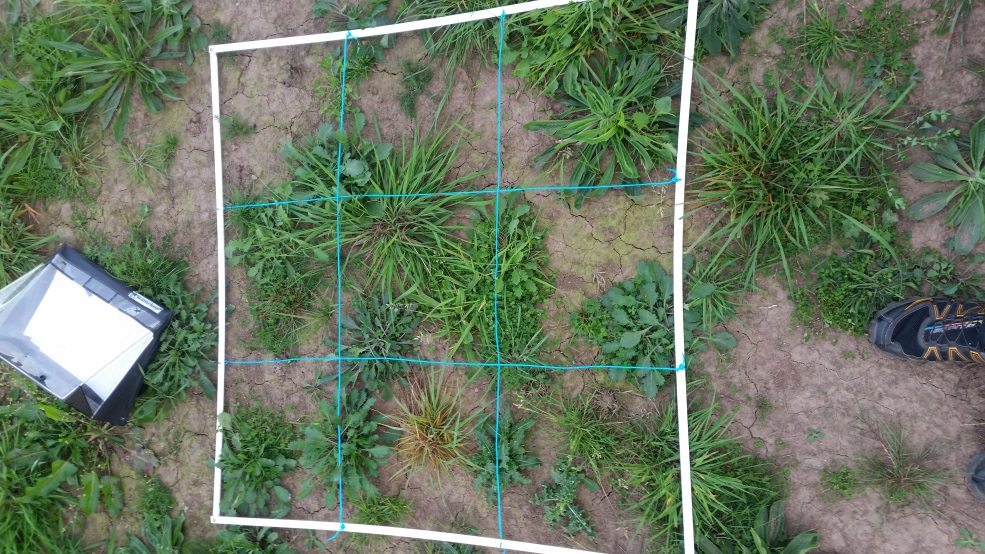
Another way of monitoring plants is to create an entire site list of all the plants found over the whole meadow, with abundance scores for each species to see how plant composition changes over time. This method is quite intensive, needs an expert botanist, and takes a couple of days each year, but the results can be essential in understanding how best to manage the reserve.
Birds
We have records of over 80 bird species spotted in and around the Nature Reserve. The area is particularly good for warblers, with six species in residence each summer. We have already seen large groups of swallows and house martins using the new meadow pond to drink and catching numerous flies that gather above the meadow.
A new bird survey was started last spring based on the British Trust of Ornithology’s common birds’ census technique; which gives a good indication of breeding bird populations on a small site. The idea is to walk the same route on ten separate occasions throughout the bird breeding period; generally late March to mid-July depending on the year and species. All birds encountered visually or through their song are recorded onto maps using special symbols for each species.
Photo credit: Andy Harmer
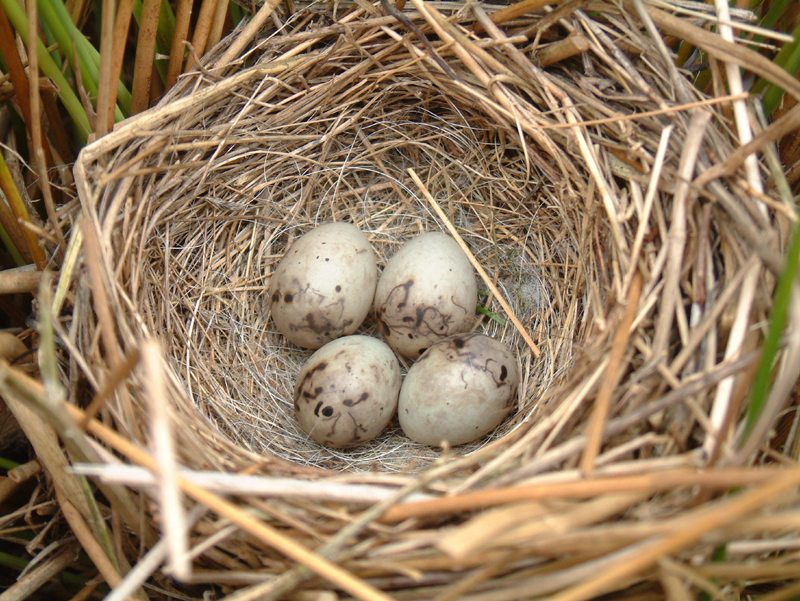
Additional information is gathered such as where the bird was seen in flight, singing, showing signs of territorial behaviour or actually on a nest. Most surveys are carried out just after dawn, but two are done in the early evening to pick up other species that may be more active at that time of day. At the end of the season all of the maps are transposed onto a single map for each species, showing all of the records from across the ten surveys.
Analysing the maps gives an idea of how many individual pairs of each species have bred at the zoo’s Nature Reserve. We’ll use this to make management recommendations and to provide conditions which are suitable for a wide range of species. The mosaic of reedbed and wet meadow and scrub at the reserve is particularly important for reed bunting, reed warbler and grasshopper warbler, and a kingfisher now regularly hunts for minnows in our wet meadow pond. Here’s a link to a reed bunting call so you’ll know what to listen out for next time you visit!
Recording events and Bioblitz
We regularly hold recording days at the Nature Reserve to increase our understanding of the site and to help people learn about specific groups of animals. Sometimes we run a Bioblitz where wildlife experts and members of the public record as many things as possible within a 24 hour period.
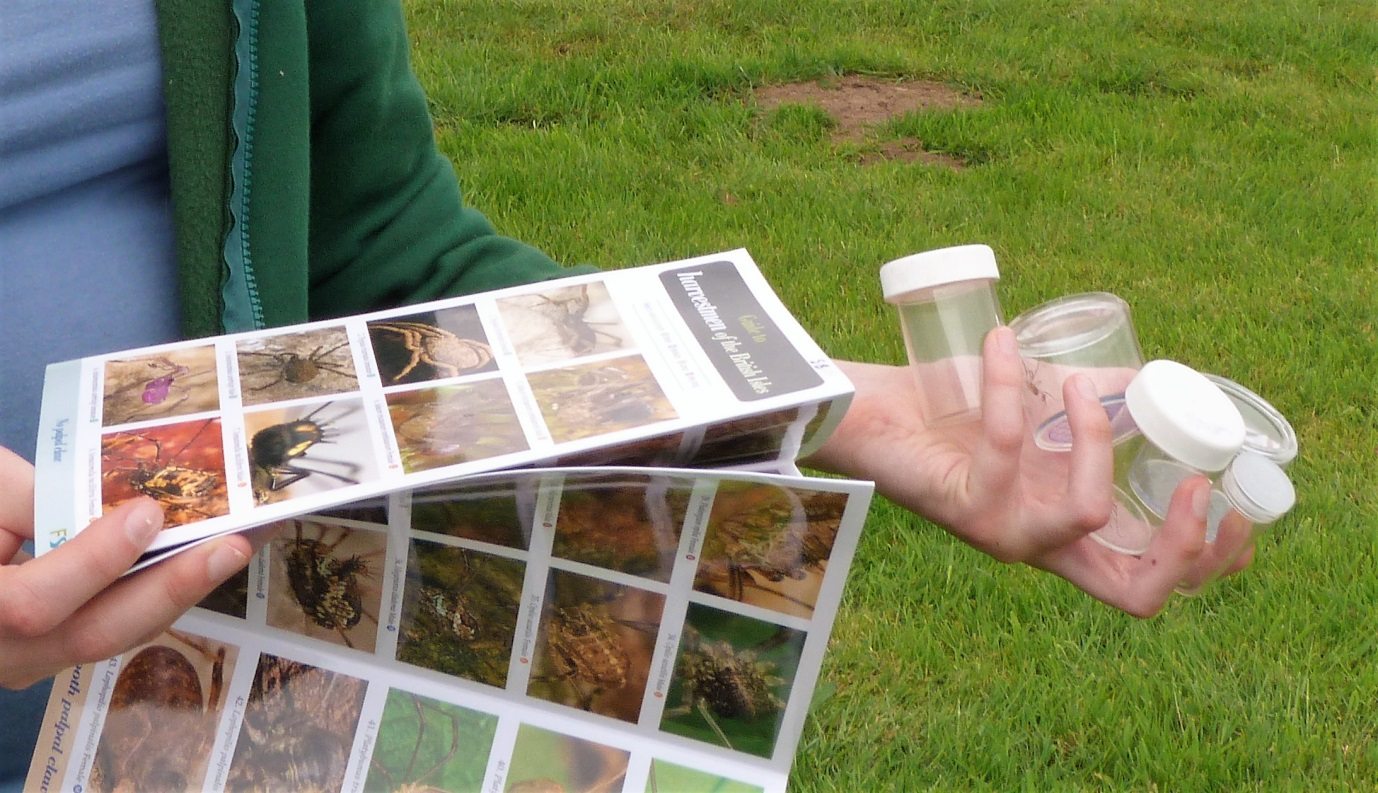
These events can be incredibly valuable, especially if repeated every few years, to see if the species lists have changed substantially. Experts often find things that we’ve never found before, or been able to identify!
We’ve also run school visits, courses for the public and staff training events at the reserve. It is a great place to come and see a really good range of Cheshire’s special wildlife.
We need your help
Please come and help us spot wildlife at the reserve. Even records of common species are extremely important. Many years ago house sparrows were common everywhere, but now they have seen huge declines. If people hadn’t taken time to record them we might not have realised just how much they are in trouble, in order to take action to protect them!
Read some hints and tips on recording wildlife, why it’s important and how you can help us here >
There’s so much to do at the Nature Reserve and it’s a great area to visit either before or after your visit to the zoo! We hope it inspires you to take action at home in your garden or community space to help local wildlife. We look forward to seeing you there soon!







